After venturing into UGC in 2024, Jenni paused it for a while. But now they’re striking back this back-to-school season, right after acquiring a handful of ed-tech startups over the summer break.
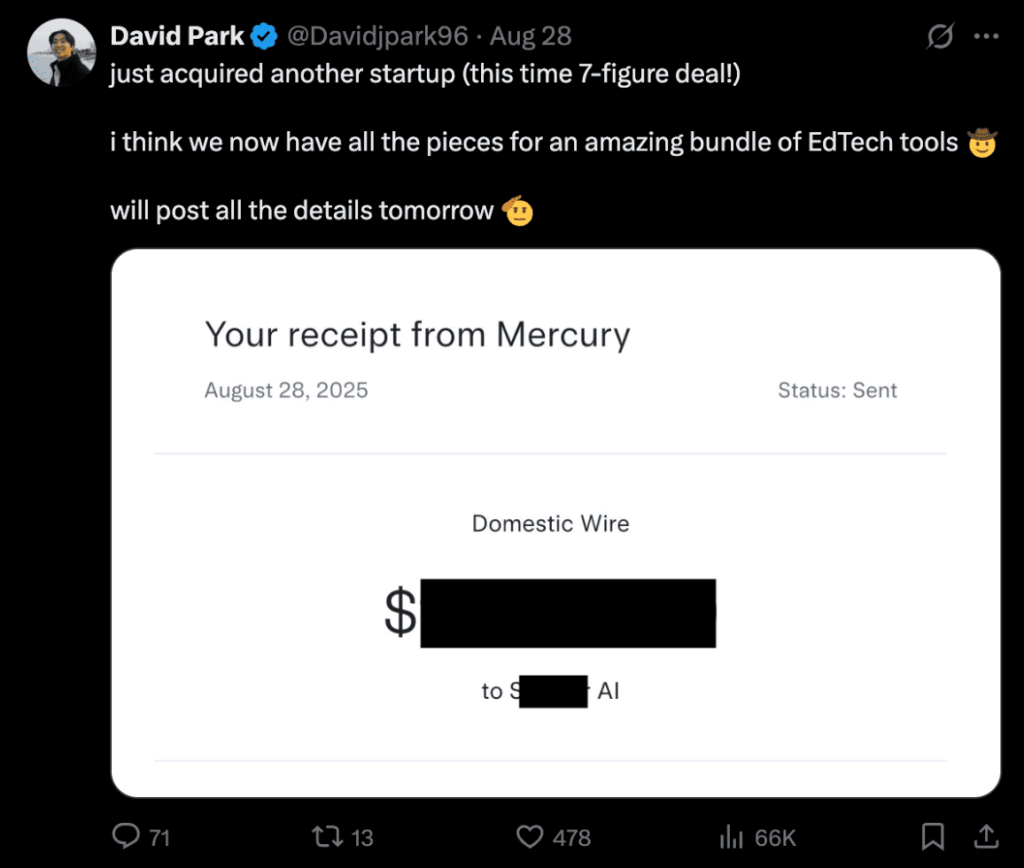
The acquisition of Citesure and its founder Matt has sparked another UGC spree from Jenni.
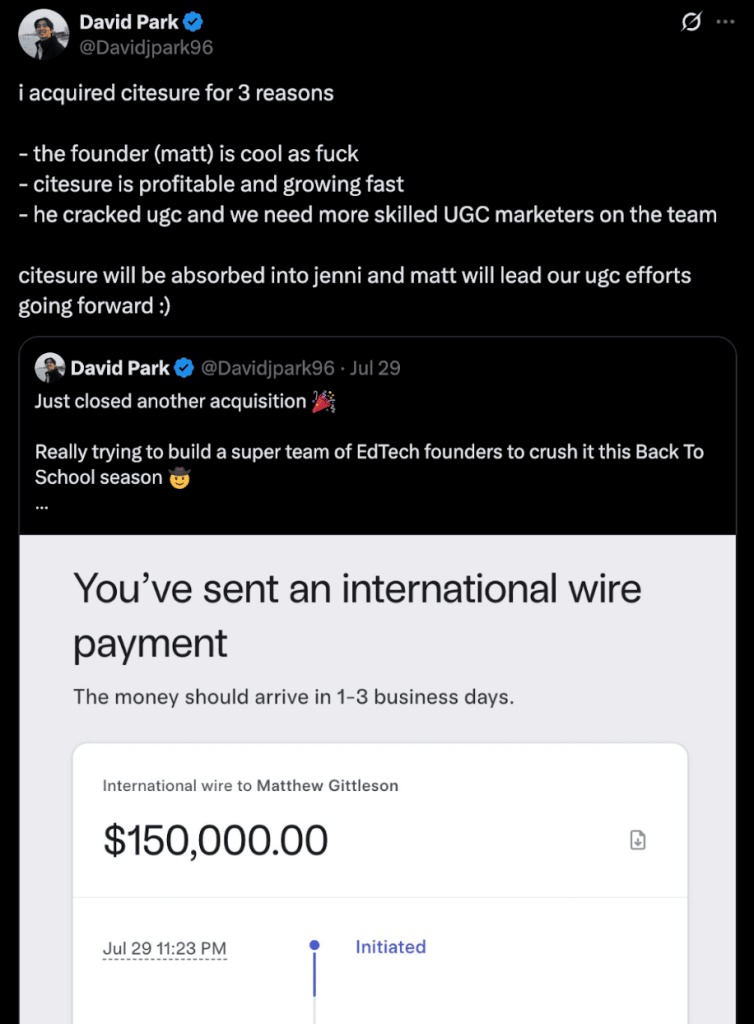
And they didn’t waste time.
They quickly scaled to over 80 creators. We spotted 40+ accounts on TikTok alone (likely the same or more on IG) pulling in about 15M views in just a few weeks.
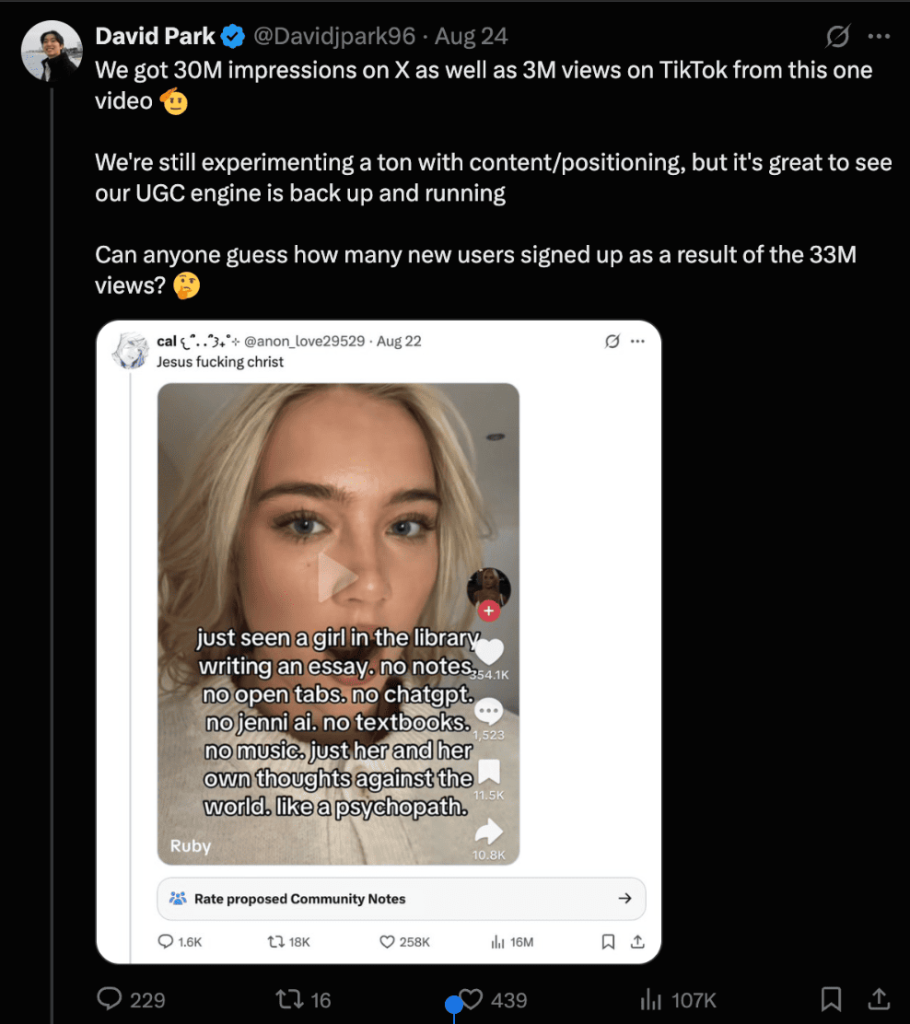
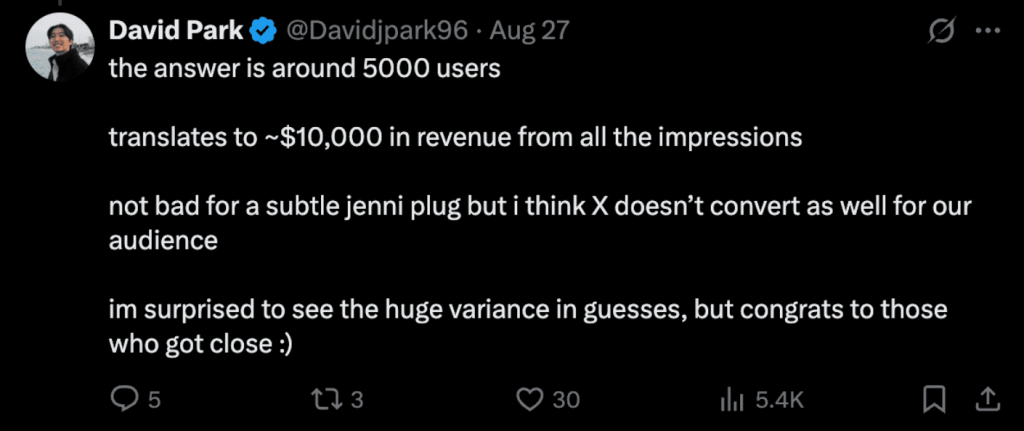
One post in particular caught our attention. It used nothing but a long text hook on a 6-second clip and drove about $10k in revenue.
When you sort by total views, the power law effect shows up again. In a crowded niche like “studytok,” volume matters more than ever:
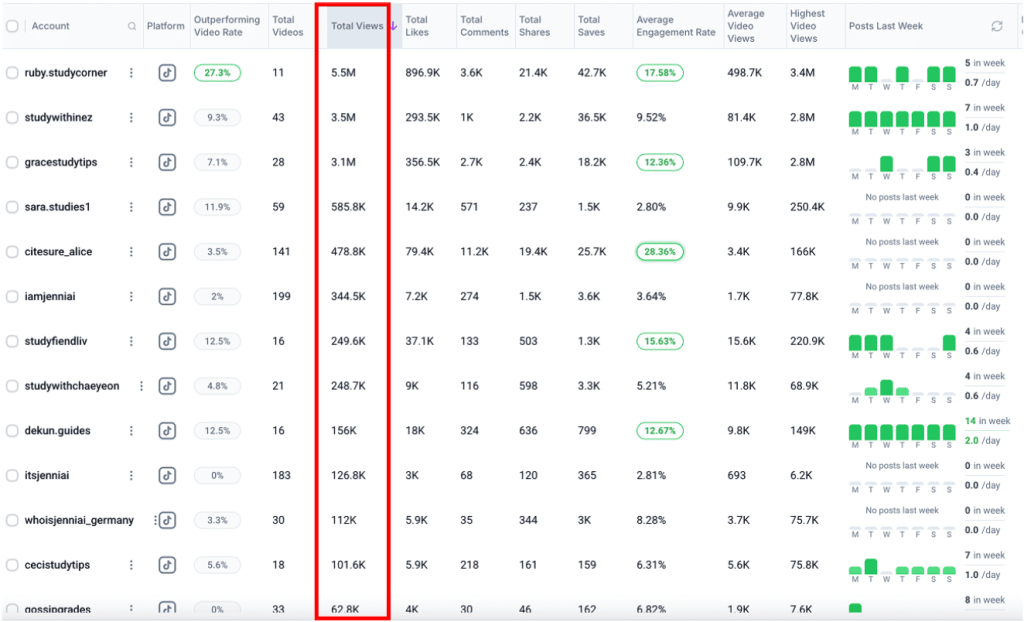
Here’s what their most viral hooks look like:
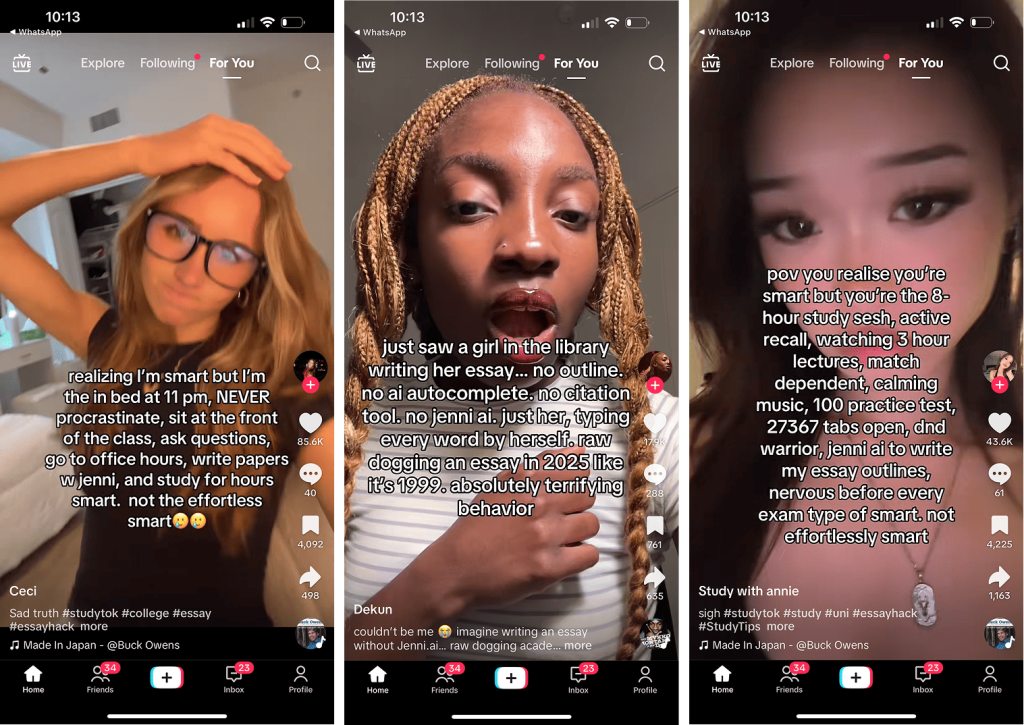
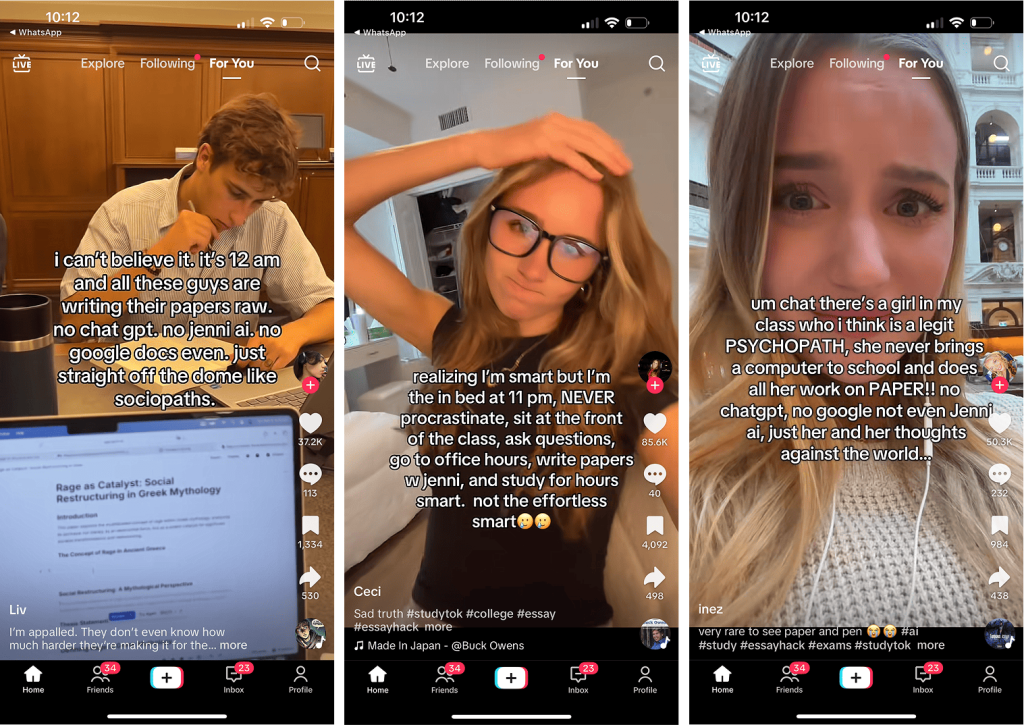
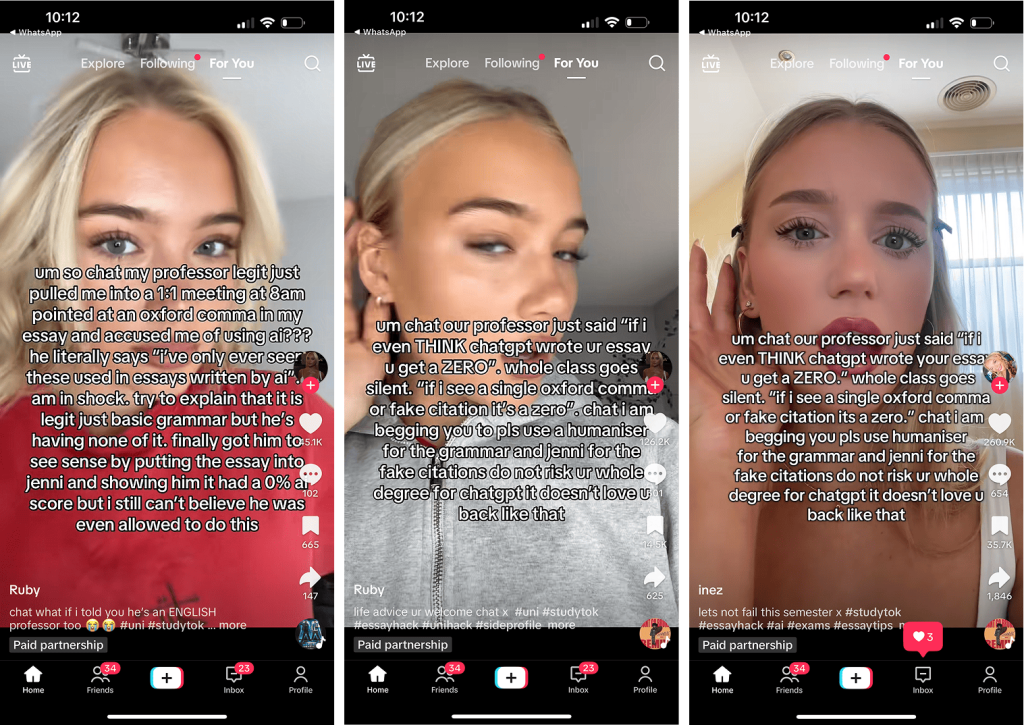
- Linguistic tricks like “pov…,” “um chat…,” “no because…,” “tell me why…”.
- Time anchors like “11 pm,” “8 am,” repeated often.
- Gen Z specific slang like “27367 tabs,” “psychopath,” “raw dogging an essay.”
- Effort stack verbs like “annotate, highlight, active recall, spaced repeat, redraft.”
These easily turn into plug-and-play templates:
- realizing i’m [positive label] but i’m the [effort list] smart, not the [effortless label] smart.
- just saw someone [task]… no [tool 1], no [tool 2], no [tool 3]. just [raw act]. terrifying.
- if i even THINK [forbidden thing] you get a ZERO. whole room goes silent. here’s how to not die today: [tip 1], [tip 2]…
- pov you’re the [8-hr study / 3-hr lecture / 100 practice tests] type, not the [effortless] myth.
chat… i am begging you…
If you search these hook starters, you’ll see they’re everywhere across apps. Who came up with them first doesn’t really matter—they grew out of a mix of organic usage and pattern spotting.
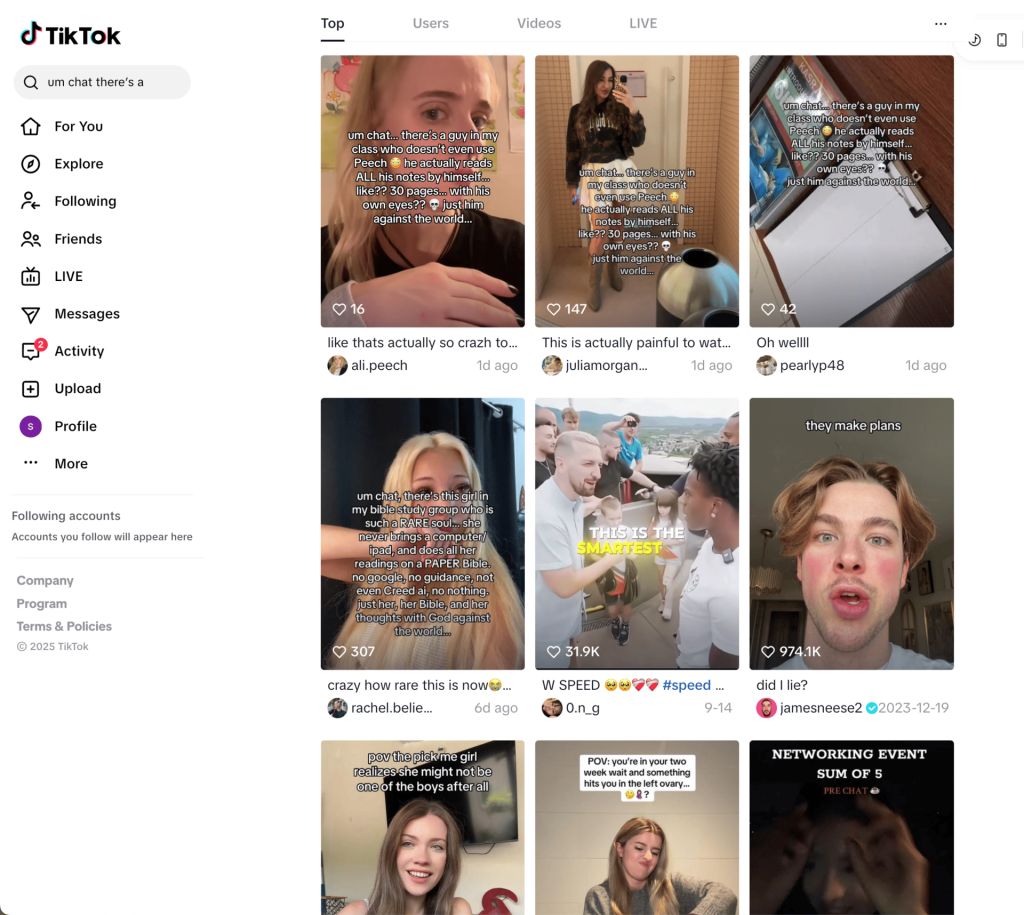
Here’s the full list of accounts we tracked: https://app.shortimize.com/c/2b10vvMqzEjlif
This strategy uses slowed-down 6-second videos packed with text, which may or may not perform well. It’s usually tough to copy and tends to work best for websites or apps that already have some recognition, though it can still work for others.
The downside is high churn, since the approach relies on hype. Viewers don’t see the product itself, so they search, land on the page, and then decide whether to try it. They end up less convinced than someone who clearly saw the problem and solution demonstrated.
A big advantage of building an ensemble of EdTech tools, like David Park is doing, is the ability to promote them together through organic UGC.
We’ve shared last week why we think UGC bundling can work so well: one niche account making videos about different apps and products. This strategy could also lead to building or tapping into bigger longer term accounts focused on pushing the bundle.
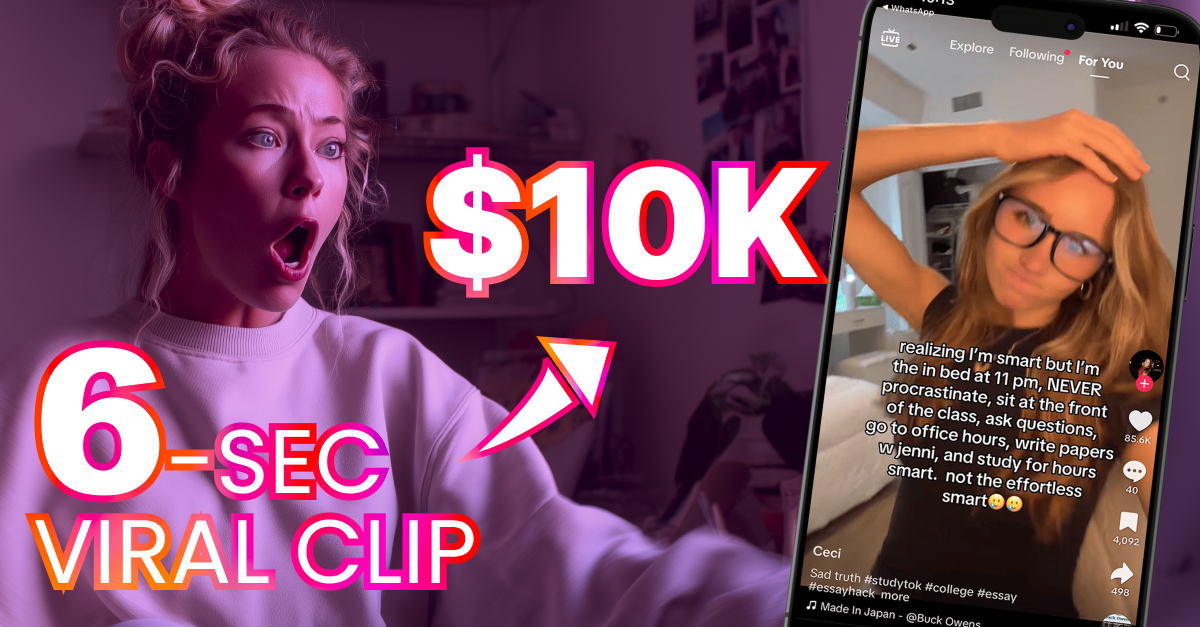
Leave a Reply